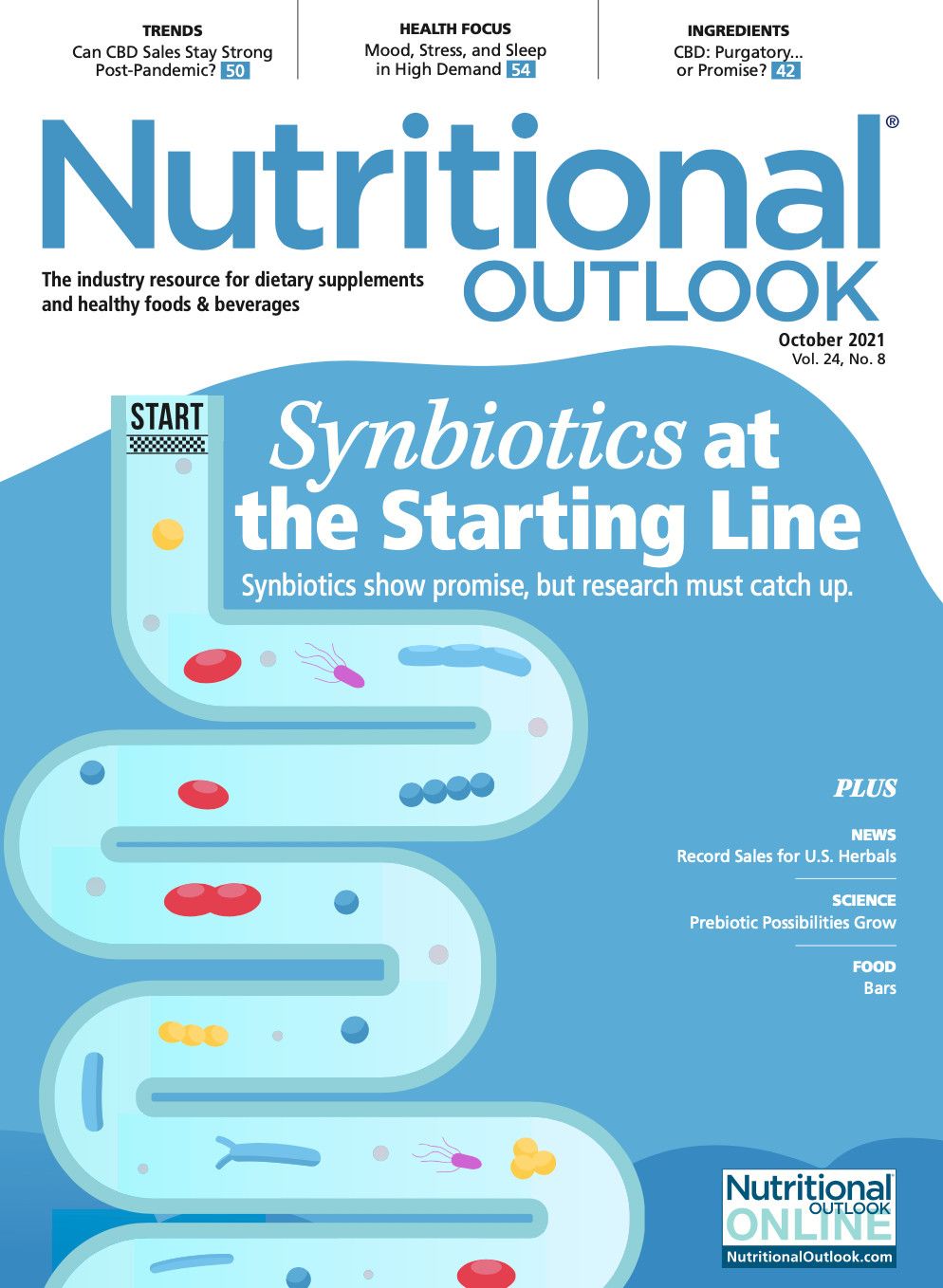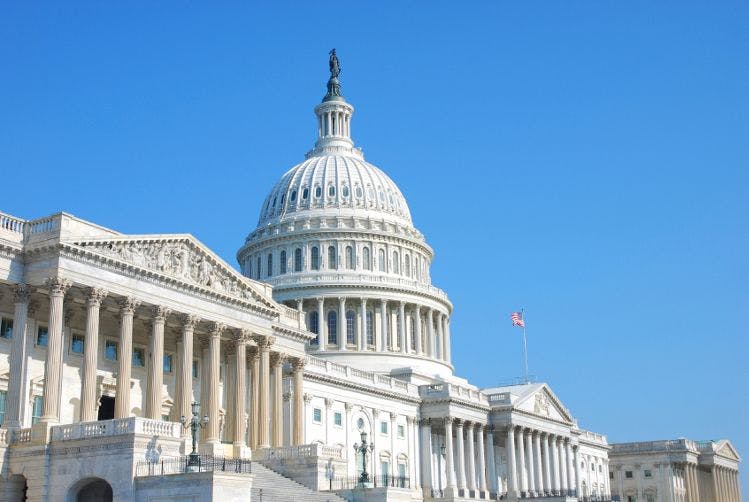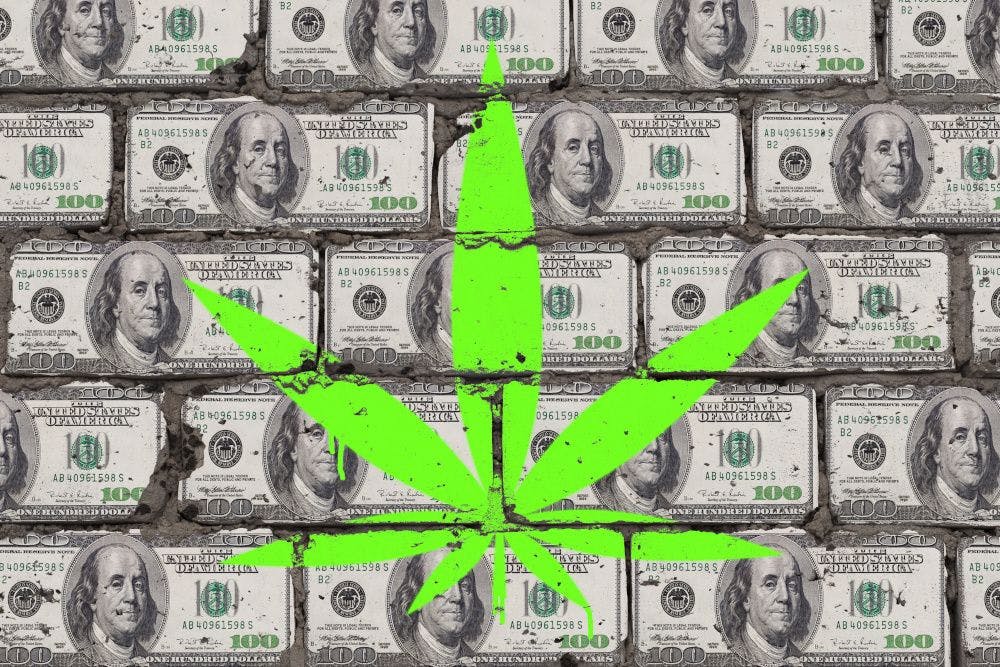Staying relevant: Can CBD sales remain buoyant post-pandemic?
The state of the CBD market more than a year and a half into the COVID era gives us clues as to how strong its momentum may be.
The COVID-19 pandemic may go down in history as, if not a golden age for CBD, then at least its breakthrough moment. And the reasons why are self-evident.
Just ask Farhana Majid, marketing operations associate, SPINS (Chicago). “COVID brought with it a lot of uncertainty, stress, and heightened concerns around health and wellness, and that led consumers to put self-care first,” she recalls. “To help ease their stress and anxiety, they made CBD a popular ingredient, and that can definitely be seen as a growth driver.”
But once the pandemic-induced stress abates—whether because the vaccine vanquishes the virus or we simply learn to live with the latest strain—will the CBD category sustain its current momentum?
The jury’s still out. But the state of the CBD market more than a year and a half into the COVID era gives us clues as to how strong its momentum may be.
Sales Still Strong
The analysts at cannabinoid market-research firm BDSA (Boulder, CO) have as granular a view as any on CBD’s momentum, and as far as they can tell, “CBD sales took a backseat to other essential purchases when the COVID-19 pandemic grew more urgent during the past year,” says Kelly Nielsen, BDSA’s vice president of insights and analytics.
But even while in the backseat, domestic CBD sales grew 52% across channels in 2020, BDSA’s analysis reveals, with total sales tipping just over $4 billion for the year. The firm’s projections for 2021 estimate growth of 55%, as well, potentially raising the sector’s take to almost $6.3 billion.
As for where 2020’s sales occurred, the dispensary channel captured the lion’s share, by BDSA’s reckoning, and ultimately accounted for roughly 33% of the category total. But with 25% of the year’s CBD sales, e-commerce wasn’t far behind.
In fact, BDSA predicts that if FDA regulations loosen, dispensary sales may shrink as mainstream distribution of CBD products grows. At the same time, though, e-commerce platforms look set to keep their sales on an upward path; BDSA even foresees the e-commerce channel adding $4.1 billion to the category’s till by 2026.
Passing the Stress Test
Of course, those projections may warrant recalculation should the stress levels that sent so many to CBD in the first place subside. But Dale Baker, president, The Valens Company – US (Kelowna, BC), wagers we’re in no danger of experiencing any mass-relaxation event just yet.
“Are we really seeing lower stress levels?” he asks. “We all went through a time of unusual stress and uncertainty, and a non-intoxicating, plant-based tool for managing that stress was the right product at the right time. CBD sales are still strong emerging from the pandemic, and to speak from our perspective, we’ve not seen any dampening of demand.”
Nielsen also acknowledges stress’s continuing influence on sales, noting that BDSA research shows 33% of CBD consumers cited anxiety management as their key consumption driver, while 32% cited stress management.
Broad Benefits
Yet a certain normalization of mood is bound to occur—Delta variant or no. And fortunately for the CBD sector, consumers have no shortage of replacement justifications to keep them coming back for its even broader range of benefits.
For example, pain relief drives 47% of CBD consumers to the category, according to BDSA, with a better night’s sleep motivating 39% more. “These wellness need states are present even without a global pandemic,” Nielsen notes, “and that gives good reason to expect wellness products and supplements to see continued growth.”
And it’s worth noting that CBD doesn’t have a lock on stress management anyway. “We’re seeing other functional ingredients being used to combat stress and anxiety,” Majid notes, “with much stronger growth within the vitamins and supplements categories.”
Case in point: Data from SPINS’ natural enhanced + MULO (multi-outlet) channels (powered by IRI) show lemon balm up 736% for the 52 weeks ending June 13, 2021, while ashwagandha and ginseng saw growth of 133% and 147%, respectively. The implication, Majid suggests, is that growth for these ingredients might chip away growth for CBD.
Yet by that same token, she continues, “There’s opportunity here for synergy between the ingredients, as they promote similar uses.”
Evolving Need States
In any case, Nielsen’s noticed that as the CBD category has diversified, so, too, has its typical shopper. And with that evolution, she says, “We’ve also seen an evolving set of need states among the consumer base.”
For instance, while consumers who have been with the category for at least two years often gravitate toward products to “relax/be mellow” or “improve my quality of life,” those who have entered the market within the past month more often look for targeted benefits, like “relief of menopausal symptoms,” “post-workout recovery,” and “improved libido,” she says.
Baker’s observed a similar phenomenon, emphasizing that CBD consumers “like to shop by solution.” So, CBD product manufacturer Green Roads—which The Valens Company purchased in June of this year—has a feature on its website recommending items “based on whether the consumer is trying to relax, sleep better, or keep their bodies moving for workouts or an active lifestyle,” Baker says.
Very Well Indeed
All of which speaks to the role that wellness plays in CBD’s success. “Wellness products—topical creams, balms, salves, etc.—as well as pharmaceuticals and supplements will be the three biggest categories driving CBD sales in the coming years,” Nielsen predicts, adding that “wellness alone is expected to contribute $2.9 billion to the growth of U.S. CBD sales by 2026.”
What’s more, Majid observes, “Health-and-wellness consumers are looking for functional ingredients in all their lifestyle purchases, and the data show that consumers are willing to take advantage of CBD’s benefits in everyday products, rather than in standard medicinal products.”
As evidence, she points to SPINS data showing that CBD body-care sets led growth across all departments for the 52 weeks through June 13, 2021, with CBD-containing oral-care products up 275%, deodorants and antiperspirants up 273%, and haircare up 229%.
Food for Thought
Also driving sales are edible applications. BDSA ranks edibles the most popular CBD delivery format, with 75% of consumers who’ve partaken of the cannabinoid in the past six months reporting to have chosen an edible. IRI data also indicated growth of more than 23% in the food channel, Nielsen says.
SPINS data paint a similar picture, with CBD-infused beverages looking especially bright. Shelf-stable coffee sales were up 111% through June 13, Majid notes, while shelf-stable waters grew 66% and shelf-stable juices 44%. “Another interesting category on the rise,” she adds, “are nut and seed butters, up 77%.”
“Yet,” Nielsen points out, “while some food and beverage products are available beyond the dispensary channel, especially in e-commerce, significant growth beyond these channels awaits FDA approval of CBD as a legal food additive.” BDSA even predicates its forecast that domestic CBD sales will reach $22 billion in 2026 on the assumption of approved additive status in late 2021 or 2022.
Education Equation
FDA approval isn’t the only hurdle CBD has to clear en route to realizing its potential; experts stress the importance of cognizant consumers, as well.
“In addition to all the other things they need to do to launch a successful product,” Nielsen says, “CBD brands must educate consumers so that they can make informed choices.” This will prove especially important as sales spread beyond dispensaries—where consumers are already fairly savvy—into more mainstream venues.
Lessons Nielsen would like to see emphasized include the difference between hemp- and cannabis-derived CBD; the difference between hemp-derived CBD and hempseed and hemp-oil products; the influence of delivery mechanism on cannabinoid effects; and the “entourage effect” that occurs when multiple cannabinoids work together. “And,” Nielsen adds, “brands have to cover all this without making unsubstantiated claims.”
It’s a tall order, but one that the sector—which seems to attract passionate advocates on both the buyer and seller sides—appears determined to meet.
And for that reason and others, Baker is bullish on CBD’s future. “When people find a product that works for them, they stick with it,” he declares. “Products that solve problems stay relevant.”

Prinova acquires Aplinova to further increase its footprint in Latin America
April 7th 2025Prinova has recently announced the acquisition of Brazilian ingredients distributor Aplinova, which is a provider of specialty ingredients for a range of market segments that include food, beverage, supplements, and personal care.


























